The Feed-in tariff 2026 has gone down again. See how much it hits your state in Australia. Learn how to make 15 c/kWh by doing the right thing, now.
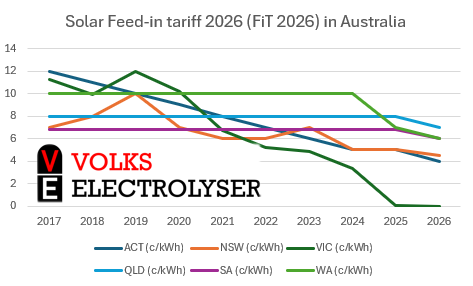
Solar Feed-in tariff 2026 (FiT 2026) in Australian Capital territory ACT and Victoria VIC
Since 2019 the solar feed-in tariff for Photovoltaics dropped every year. In 2025 you got 5 cents per kilowatt hour.
If we follow this progression the feed-in tariff 2026 will be 4 c/kWh in ACT and 0 in Victoria.
Look for your FiT below: FiT by State 2026.
What These 2026 FiTs Mean for Solar Homeowners
Very Low Incentives to Export
With FiTs of 4–7 c/kWh (and VIC at effectively 0), exporting solar yields little financial return. The value of exported electricity is now far lower than retail grid electricity prices.
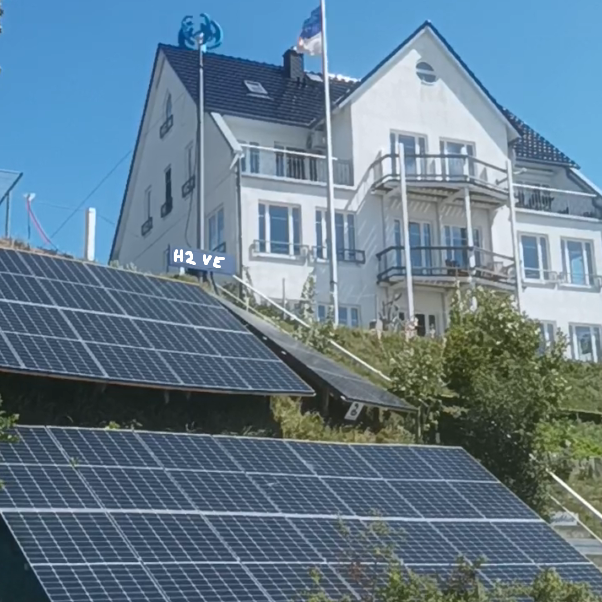
It is clear that enlarging the solar array makes no more sense unless you add a flexible load like an electric vehicle which you always charge while peak performance of the PV System.
But what to do with solar when you are on holiday?
Solar homeowners might enlarge their lithium Batteries. Caution! Your Batteries shouldn’t store more than 3 days demand without sunshine. Chemical discharge and management systems make storage in Lithium a waste of money.
How to use solar surplus usefully?
Imagine an electrolyzer switches on, when the battery is full.
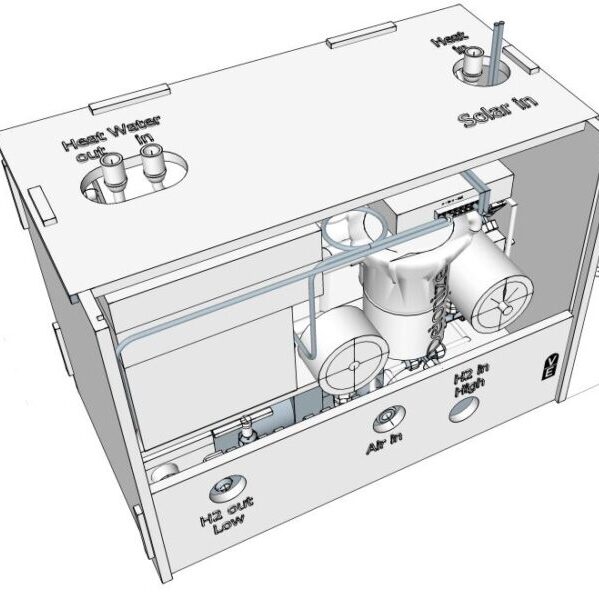
It will produce gas you can easily store for month in hydrogen cylinders.
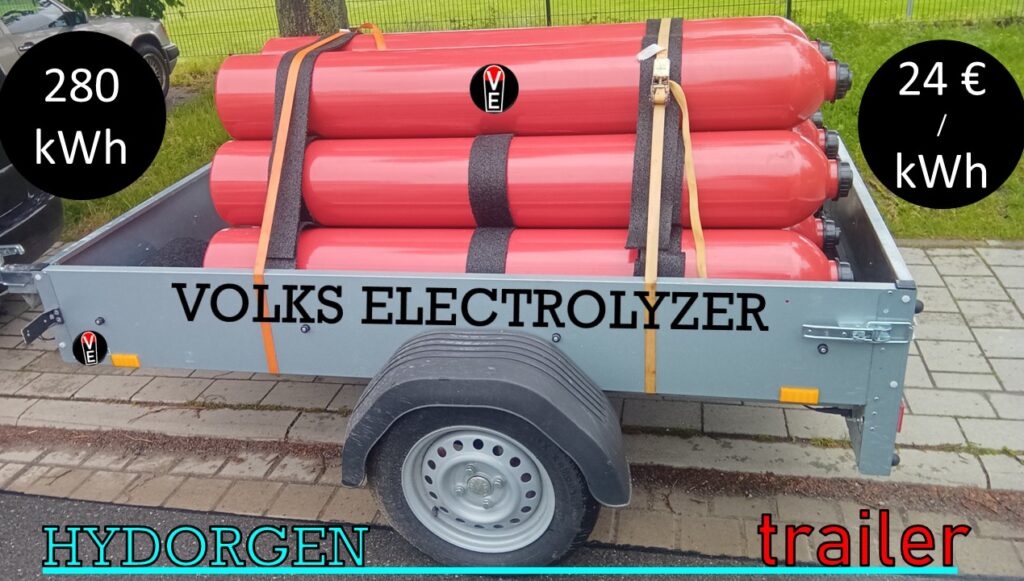
The electrolyser produces 1 kg of hydrogen every 3 days.
The Hydrogen Production Tax Incentive (HPTI) will pay you 2 $/kg
In stead of a feed-in tariff you will get 6 c/kWh and you have the hydrogen. If you use propane with a market value of 27 c/kWh, there is a big saving potential.
1 kg of hydrogen contains 33 kWh so that the value you are creating by making hydrogen add up to
Hydrogen Propane equivalent value 8,91 AUD
HPTI 2 AUD
You’ll save 10,91 AUD per kilogram of hydrogen you make
Hydrogen Production Tax Incentive | Australian Taxation Office
Get the best feed-in tariff 2026 in Australia by making hydrogen
By making hydrogen with surplus solar you will make 33 cents/kWh of hydrogen. Of course this has to be multiplied with the efficiency of electrolysis and hydrogen compression so that 15 cent/kWh of hydrogen can be made. But no worries the volks-electrolyzer can use the heat losses to make shower water at 60 ° C so that you do not have to use propane or electricity for that.
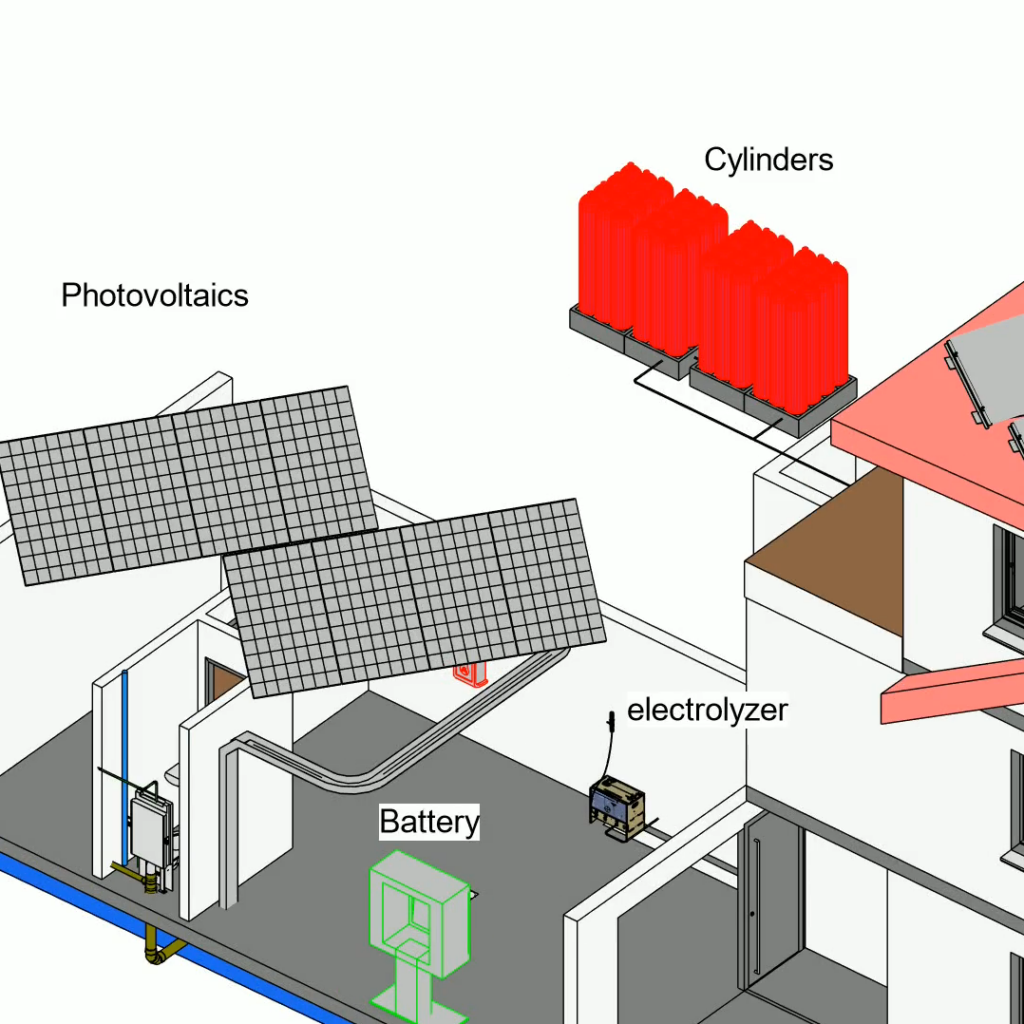
FiT by State 2026
| year | ACT (c/kWh) | NSW (c/kWh) | VIC (c/kWh) | QLD (c/kWh) | SA (c/kWh) | WA (c/kWh) |
| 2010 | 45 | 60 | 60 | 44 | 44 | 47 |
| 2011 | 45 | 20 | 60 | 44 | 44 | 47 |
| 2012 | 45 | 10 | 25 | 10 | 16 | 30 |
| 2013 | 30 | 9 | 25 | 10 | 6,8 | 30 |
| 2014 | 20 | 8 | 25 | 10 | 6,8 | 30 |
| 2015 | 15 | 7 | 25 | 10 | 6,8 | 30 |
| 2016 | 13 | 6 | 5 | 8 | 6,8 | 10 |
| 2017 | 12 | 7 | 11,3 | 8 | 6,8 | 10 |
| 2018 | 11 | 8 | 9,9 | 8 | 6,8 | 10 |
| 2019 | 10 | 10 | 12 | 8 | 6,8 | 10 |
| 2020 | 9 | 7 | 10,2 | 8 | 6,8 | 10 |
| 2021 | 8 | 6 | 6,7 | 8 | 6,8 | 10 |
| 2022 | 7 | 6 | 5,2 | 8 | 6,8 | 10 |
| 2023 | 6 | 7 | 4,9 | 8 | 6,8 | 10 |
| 2024 | 5 | 5 | 3,3 | 8 | 6,8 | 10 |
| 2025 | 5 | 5 | 0,04 | 8 | 6,8 | 7 |
| 2026 | 4,0 | 4,5 | -0,9 | 8,0 | 6,8 | 7,0* |
*linear progression forecast